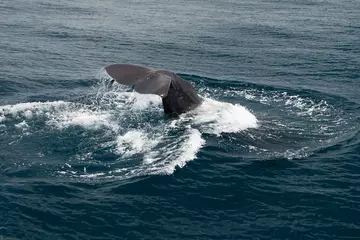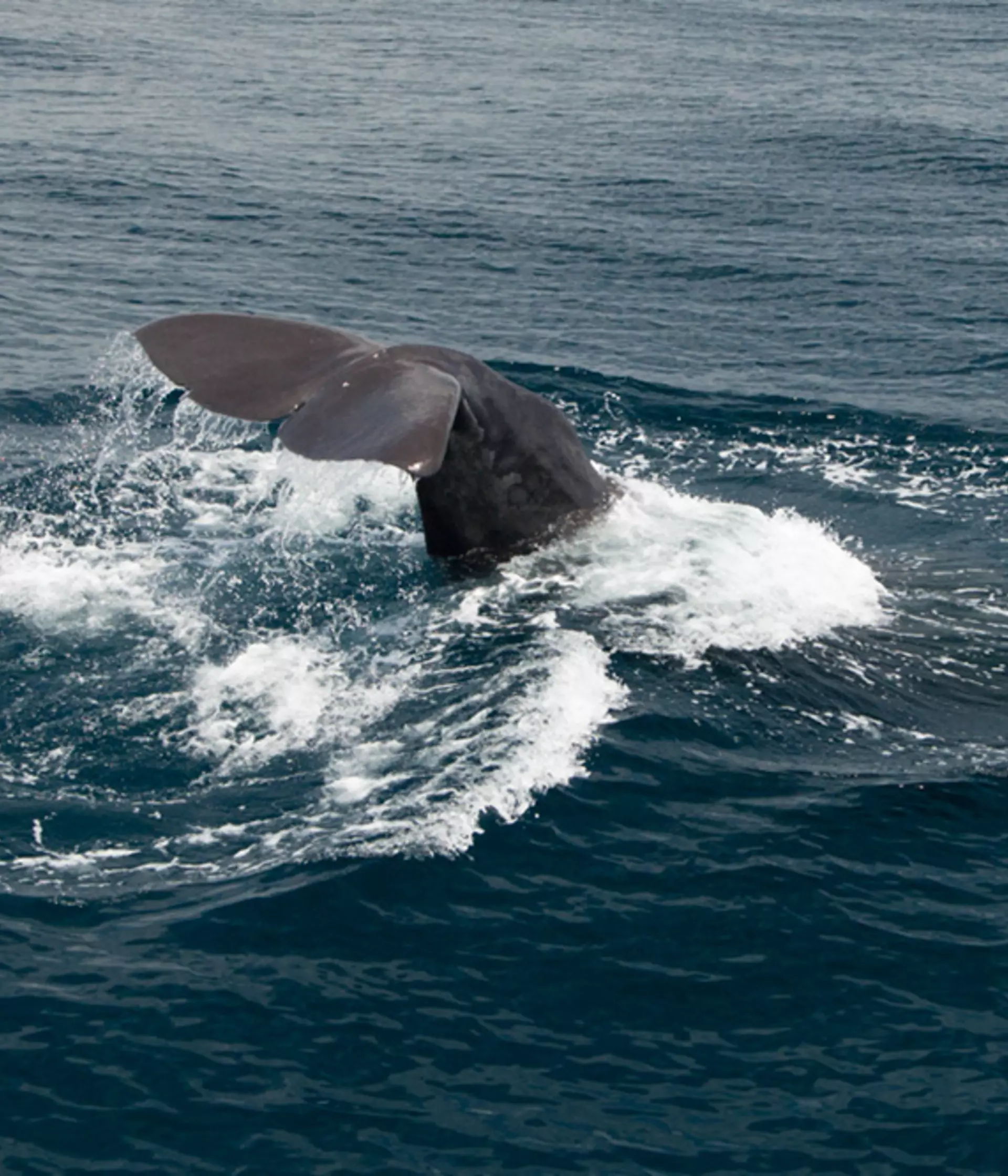
ZSL
Zoological Society of London
A ZSL study reveals sperm whales have been pushed into deeper waters by historic hunting.
Tiny whales stamped 200 years ago into the margins of whaling logs have helped scientists understand the lasting impact of historic hunting on sperm whales living in the West Indian Ocean today.
Where are sperm whales found today?
Through the analysis of centuries-old whaling logs, a ZSL-led study published today in the scientific journal Conservation Biology (9 February 2023), reveals how these gentle giants - once found in this region predominantly along the coastlines of East Africa, Madagascar and the Arabian Peninsula - now appear more commonly in deeper ocean basins and near remote oceanic islands like the Chagos Archipelago. This led scientists to speculate on the long-lasting consequence of commercial whalers in the 18th to early 20th century, who hunted these animals for their blubber and oil, with important implications for the protection of this vulnerable species.

The team compared the records of North American whalers operating between 1792 to 1912 - each page embellished with miniature, inky depictions of that day’s catch - with modern scientific surveys since 1995, to understand what changes had occurred to the distribution of these whales in the West Indian Ocean.
The study indicates that sperm whales are showing characteristics of “refugee species” – animals and plants that have been pushed out of their preferred habitat - typically by human activity - and are now confined to areas where it is harder for them to survive.
Dr Tom B Letessier, lead author of the paper and research fellow at ZSL’s Institute of Zoology, explains: “It’s remarkable to consider that the distribution of the sperm whale, the world’s largest toothed animal, could still be being shaped by the ghost of human hunting from several generations ago.
“Sperm whales are highly intelligent, social animals, who are known to adapt their behaviour to protect themselves and family members against threats. While the higher chance of being hunted would have directly reduced the number of whales in coastal habitats, the ancestors of today’s sperm whales also likely learnt to avoid these areas and instead sought refuge in the open waters – where they remain today, despite the increased challenges of doing so.”
Why are sperm whales under threat?
Found in oceans across the world, sperm whales are characterised by a large pouch of waxy oil in their head, believed to help them with buoyancy and echolocation when hunting squid in deep, dark waters. Alongside demand for whale blubber as lamp fuel, this oil became highly sought after due to its suitability for making candles, soap and machine lubricant, leading to commercial whalers targeting these animals and reducing their population by over two thirds in less than 300 years.

Tom added: “Although commercial hunting for sperm whales has ceased and the species is now protected under various acts and treaties, they are still vulnerable to human factors such as entanglement in fishing nets, pollution and boat collisions.”
Professor Samuel Turvey from ZSL’s Institute of Zoology, a co-author on the study, continues: “It’s crucial to address any current threats that are pushing a species towards extinction, but we must also recognise that some species now survive only on the very edges of their ideal habitat. In the case of the sperm whale, understanding not only where the species is found today, but also where it once thrived, is key for effective, science-driven conservation planning and action to protect this incredible species.
“Our study shows the power of utilising historical records to unlock important information for modern-day conservation that would otherwise be lost to the past. It’s essential that scientists continue to use unexpected sources of information, such as environmental archives, when seeking to understand how human activity impacts the natural world - and what we can do to restore it.”
How is ZSL working to protect sperm whales?
Protecting species is central to ZSL’s mission and purpose, and this crucial new scientific research will contribute to the long-term protection of sperm whales. It is part of a wider project funded by The Bertarelli Foundation, dedicated to exploring cetacean species and their abundance using hydrophones and visual surveys in the Chagos Archipelago. Co-led by Tom B Letessier and colleagues, the team will include local Indian Ocean experts, and hopes to gather more data to understand the distribution of sperm whales (and other species) to understand how they can best be protected.
ZSL believes nature can recover, and that conservation is most effective when driven by science. We call for science to guide all global decisions on environment and biodiversity and build a healthier future for wildlife, people and the planet.
Support ZSL’s world leading, collaborative science and conservation work
Climate change and human activity have pushed our precious planet to its limit, causing the devastating loss of so many habitats and species. From lab to field, hands on and behind the scenes, we’re leading the future of conservation, shaping agendas and influencing change to support better life, health and living for people and wildlife.
